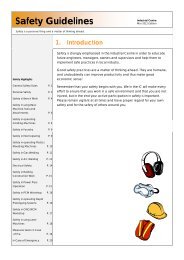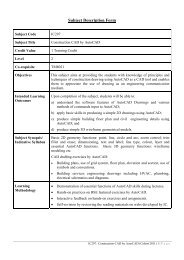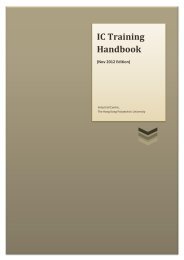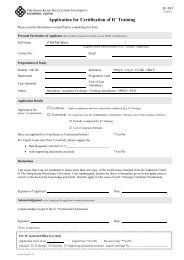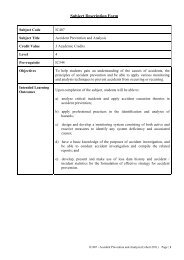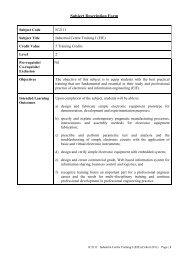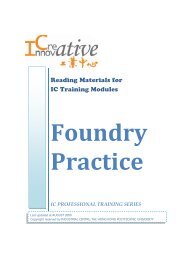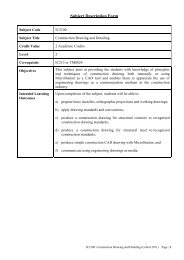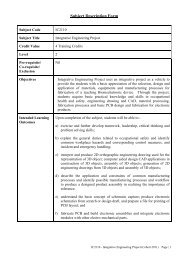Sheet Metal Fabrication - The Hong Kong Polytechnic University
Sheet Metal Fabrication - The Hong Kong Polytechnic University
Sheet Metal Fabrication - The Hong Kong Polytechnic University
You also want an ePaper? Increase the reach of your titles
YUMPU automatically turns print PDFs into web optimized ePapers that Google loves.
<strong>Sheet</strong> <strong>Metal</strong> <strong>Fabrication</strong><br />
<strong>Sheet</strong> metal riveting is carried out in four steps.<br />
1. Drilling. Drill or punch the holes through the metals to be joined.<br />
2. Drawing. Insert the rivet into the metal and place it on a stake. Centre the hole<br />
in the rivet set over the rivet and tap the set a few times with the hammer. This<br />
operation will draw the rivet and the metal tightly together.<br />
3. Upsetting. Tap the shank of the rivet with a hammer until the shank spreads to<br />
the approximate size of the head required.<br />
4. Heading. Place the dimple of the rivet set over the rivet. Tap the rivet set over<br />
the rivet. Tap the rivet set with the hammer until the head is formed on the rivet.<br />
3.2.2 Blind rivets<br />
Blind rivets are mainly used when access to the joint is only available from one<br />
side. <strong>The</strong> rivet is placed in a pre-drilled hole and is set by pulling the mandrel<br />
head into the rivet body, expanding the rivet body and causing it to flare against<br />
the reverse side. As the head of the mandrel reaches the face of the blind side<br />
material, the pulling force is resisted, and at a predetermined force, the mandrel<br />
will snap at its break point, also called "Blind Setting". A tight joint formed by the<br />
rivet body remains, the head of the mandrel remains encapsulated at the blind<br />
side, although variations of this are available, and the mandrel stem is ejected<br />
3.3 Spot welding<br />
Spot welding is a resistance welding method used to join two to three<br />
overlapping metal sheets, studs, projections, electrical wiring hangers, some heat<br />
exchanger fins, and some tubing. Usually power sources and welding equipment<br />
are sized, to the specific thickness and material being welded together. <strong>The</strong><br />
thickness is limited by the output of the welding power source and thus the<br />
equipment range due to the current required for each application. Care is taken<br />
to eliminate, contaminates between the faying surfaces. Usually, two copper<br />
electrodes are simultaneously used to clamp the metal sheets together and to<br />
pass current through the sheets. When the current is passed through the<br />
electrodes to the sheets, heat is generated due to the higher electrical resistance<br />
where the surfaces contact each other. As the electrical resistance of the material<br />
causes heat build-up in the work between the copper electrodes, the rising<br />
temperature causes a rising resistance, and results in a molten pool contained<br />
most of the time between the electrodes.<br />
3.4 Clinching<br />
Clinching is a mechanical fastening method to join sheet metal without<br />
additional components using special tools to plastically form a mechanical<br />
interlock between the sheet metals.<br />
Page 16<br />
IC Professional Training



